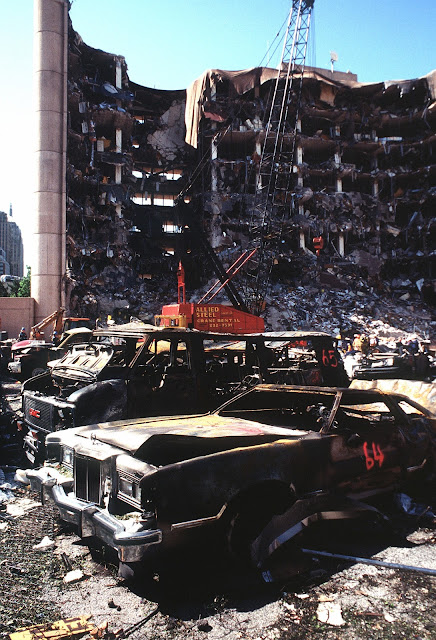 |
| Taken two days after the bombing |
Cristi and I left Oklahoma City a year later and could never make it back to see the memorial once constructed and dedicated. Finally, last summer, we made it. And it was worth it! The Oklahoma City National Memorial and Museum is extremely well done and a must-see for anyone that feels connected to those events on that fateful day, whether because you experienced it first-hand or you remember watching in horror as the scene burned into your TV screen.
As I mentioned, the Journal Records Building is now the Memorial's museum. We started there, though only briefly. Coming around the backside of the museum was like stepping into another world. Unlike a busy downtown city block, it was serene. There is a reflecting pool with "time gates" on either side. One gate is inscribed with 9:01, symbolizing our innocence before the attack and the other with 9:03, symbolizing the time we were forever changed after the bombing. The reflecting pool now lies in place of the street that separated the Journal Records Building from the Murrah Federal Building.
On the other side of the reflecting pool is a lawn of scattered chairs -- 168 of them, representing each individual that lost their life that day. The chairs are organized in rows and columns, but the rows aren't all the same: It's the same pattern as the massive hole in the building juxtaposed with where the individuals were killed in the building. It's a powerful and symbolic reminder of the tragedy.
 |
| The Journal Records Building (Museum) is in the bottom of the photo. The chairs are where the hole is, and the reflecting pool is where the street is. |

